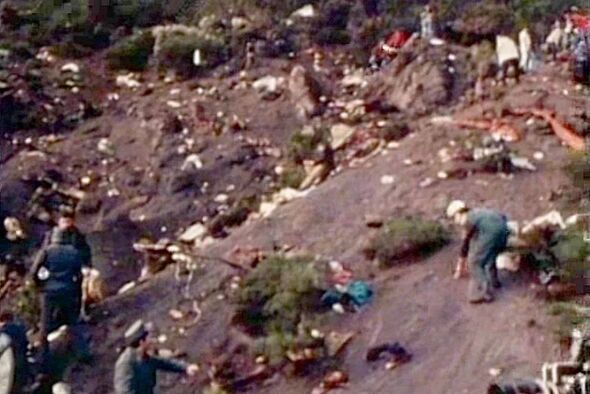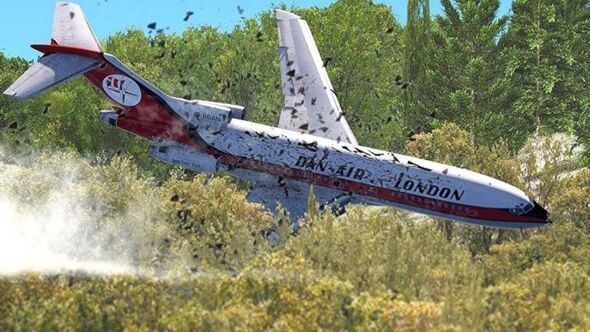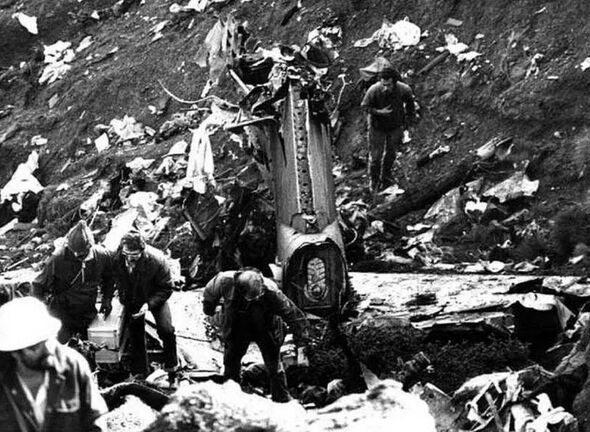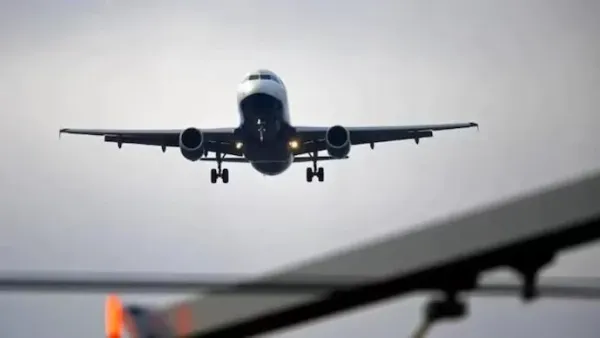
Tenerife is a top holiday destination for Brits seeking sun, sea and sand.
However, on 22 March 1977, disaster struck when a passenger flight heading to Tenerife North airport, then known as Los Rodeos Airport, crashed, claiming the lives of all 583 people on board.
Tenerife has two airports, but Tenerife North is notoriously challenging for pilots due to its altitude of 2,000ft and often tricky weather conditions that can affect visibility.
Tragedy hit again just three years later. At 9.20am on 25 April 1980, Dan-Air's Flight 1008 left Manchester Airport bound for Tenerife, carrying mainly British holidaymakers eager to enjoy the Canary Islands' sunny beaches and beautiful landscapes.
The flight crew comprised three seasoned pilots - Captain Arthur Whelan, 50, co-pilot First Officer Michael Firth, 33, and flight engineer Raymond Carey, 33. Along with five flight attendants, the total number of passengers and crew on board was 146, reports the Daily Record.
For three hours, the flight went smoothly until the crew began their descent at 1pm local time.
Air traffic was rerouted to the unconventional Runway 12 due to atypical wind directions, leaving air traffic controller Justo Camin, 34, without radar and in a tight spot as two planes were inadvertently aiming for the same runway, risking a collision.
Camin implemented procedural tactics, directing each aircraft along preset paths and by 1:18 pm, realised the need to put Dan Air's crew into a holding pattern for Runway 12's safe landing slot, which wasn't standard protocol.

Crafting a swift solution, he directed Flight 1008 into an improvised left-hand circuit until the other plane had landed.
Upon First Officer Firth's positional update, Camin broadcasted, "Roger, the er, standard holding pattern overhead Foxtrot Papa is inbound heading one five zero, turn to the left, call you back shortly."
Captain Whelan acknowledged with a curt "Roger", neglecting to parrot Camin's mandate-a lapse that cost dearly later on.
Tragically, when Camin said, "turn to the left," he actually meant "turns to the left," a subtlety lost on the crew who misconstrued this as an immediate left turn command.
Camin, who had authorised the altitude of 5,000 feet for the flight, committed a minor but fatal error.
Captain Whelan, bemused by the unexpected hold instruction not shown on his navigation charts, took a single turn to the left and settled on a bearing of 150 degrees, assuming it matched the air traffic controller's directive.
The aircraft was now gliding above mountainous regions where the minimum safety level was 14,500 feet.
A mere minute and six seconds before tragedy struck, one of the aviators commented, "bloody strange hold, isn't it?" and observed, "it doesn't parallel with the runway or anything."

Amidst their confusion, as recorded on the cockpit voice recorder, the pilots' consternation grew, yet no one disputed the orders from air traffic control.
ATC Camin, under the impression the airplane was safely over the ocean in his new holding pattern, signalled for the descent of another 1,000 feet, unaware it was actually navigating through treacherous mountains.
In the cockpit, uncertainty permeating his voice, Captain Whelan admitted to his co-pilot, "I don't like that."
His fellow pilot queried with trepidation, "they want us to keep going more round, don't they?" The automatic ground alarm suddenly pierced the cockpit atmosphere, blaring an urgent "pull up, pull up!" warning.
Engulfed by urgency, Captain Whelan veered away from his left turn and decided for a drastic right hand sweep, driven by the belief that this action might skirt them past the imminent danger.
In a tragic turn of events, when the alarm sounded, the standard manoeuvre to "pull up" and gain altitude was disregarded.
Co-pilot Firth swiftly identified that the captain's choice was misguided and suggested a different tactic.
Flight Engineer Carey's urgent exclamation, "let's get out of here," reverberated on the cockpit voice recorder (CVR), but Captain Whelan continued the fateful right turn, leading to an alarming 300-foot drop.
Spanish authorities have clearly concluded in their report that this exact manoeuvre dashed any remnants of hope to prevent the catastrophe.
As the situation escalated, Flight Engineer Carey's warnings "bank angle, bank angle!" are captured as the final chilling moments before the CVR went silent.
Ultimately, Dan-Air Flight 1008 met with disaster, impacting La Esperanza forest at 5,450 feet, tragically just 92 feet (28 metres) below the summit.
The impact obliterated most of the aircraft, with wreckage strewn across the mountainside. The tail section was projected further, eventually falling into a ravine and being destroyed upon violent impact.
Small fires broke out amidst the scattered debris, and Tenerife North Airport was jolted by the crash alarm for the second time in just over three years. Rescue teams arrived at the mountain within hours, but it was immediately apparent that none of the 146 passengers on board had survived the crash.
The scene was so catastrophic that not a single intact human body could be found, and many victims could not be definitively identified. While acknowledging the air traffic controller's error, Spanish investigators placed all the blame on the Dan Air crew.
However, British investigators argued that the controller should have recognised earlier that the close proximity of the two planes would pose a problem, allowing him to implement a standard holding pattern and avoid any confusion among the crew.
They further contended that the controller should not have issued an untested and non-standard holding pattern, but admitted that the Dan Air crew did not question the controller's instructions or seek clarification.

The British team also criticised Camin's decision to allow flight 1008 to descend to 5,000 feet. If the holding pattern had been designed according to official regulations, the minimum altitude should have been set at 7,000 feet.
In a harrowing incident shrouded by fog and cloud, the captain received a ground proximity warning and made a fateful right turn, leading directly into the mountain. Crews are usually trained to climb in such emergencies.
The chilling reality is that the crash was set in motion by the absence of a single letter in a crucial command.
If "turns" had been used instead of "turn", the catastrophic accident might have been avoided.
Post-crash investigations prompted a rigorous overhaul of flight procedures, ensuring uniformity in holding patterns and other operations.
The tragedy highlighted the critical need for crystal-clear communication between pilots and air traffic controllers, emphasising the practice of pilots repeating instructions back to Air Traffic Control to prevent any confusion.
Dan Air, despite the calamity, resiliently continued its service until British Airways took over in 1992.
Although it remains the deadliest disaster involving a British aircraft, the memory of Dan Air Flight 1008 and the 146 souls lost has dimmed over the past 45 years.









